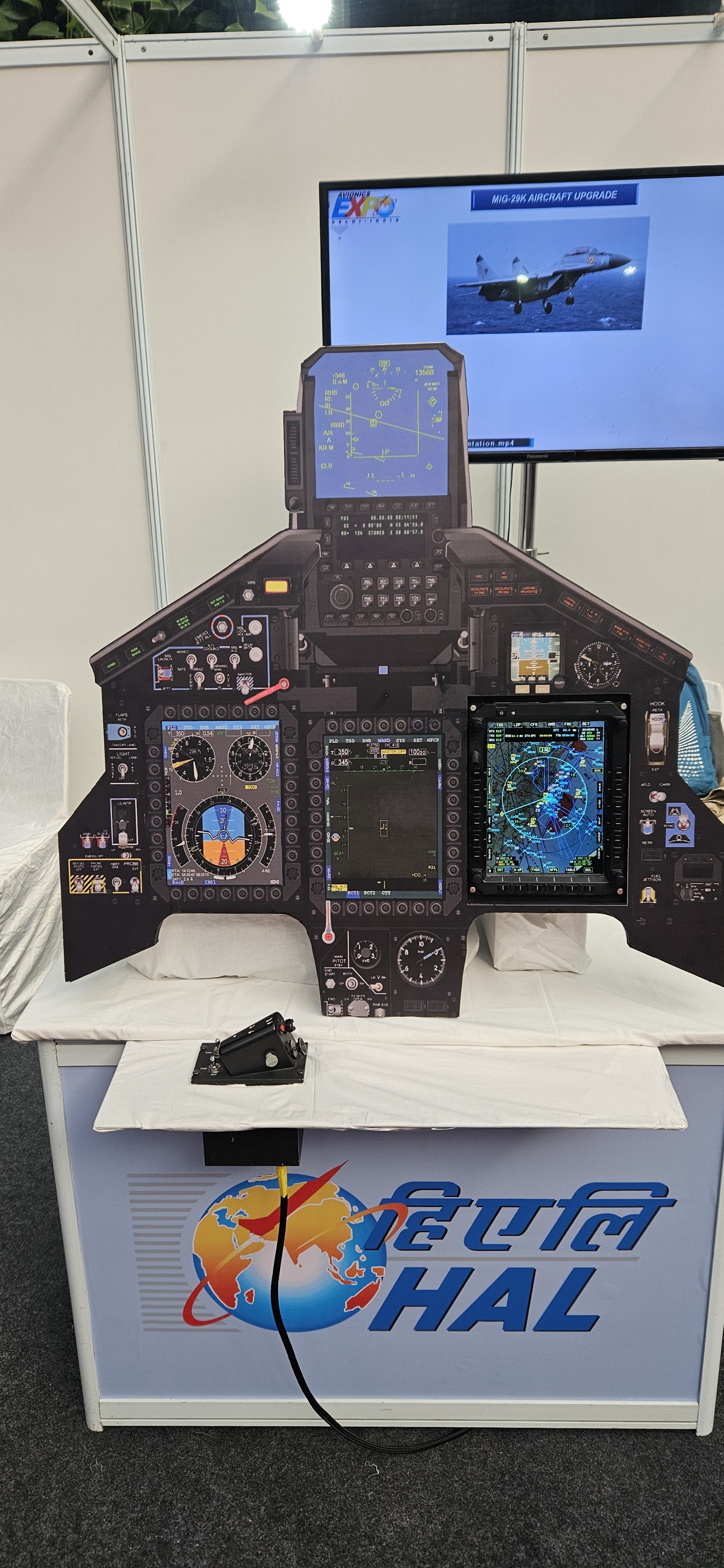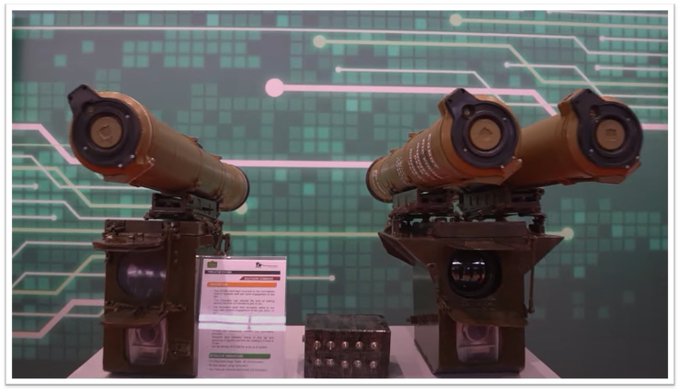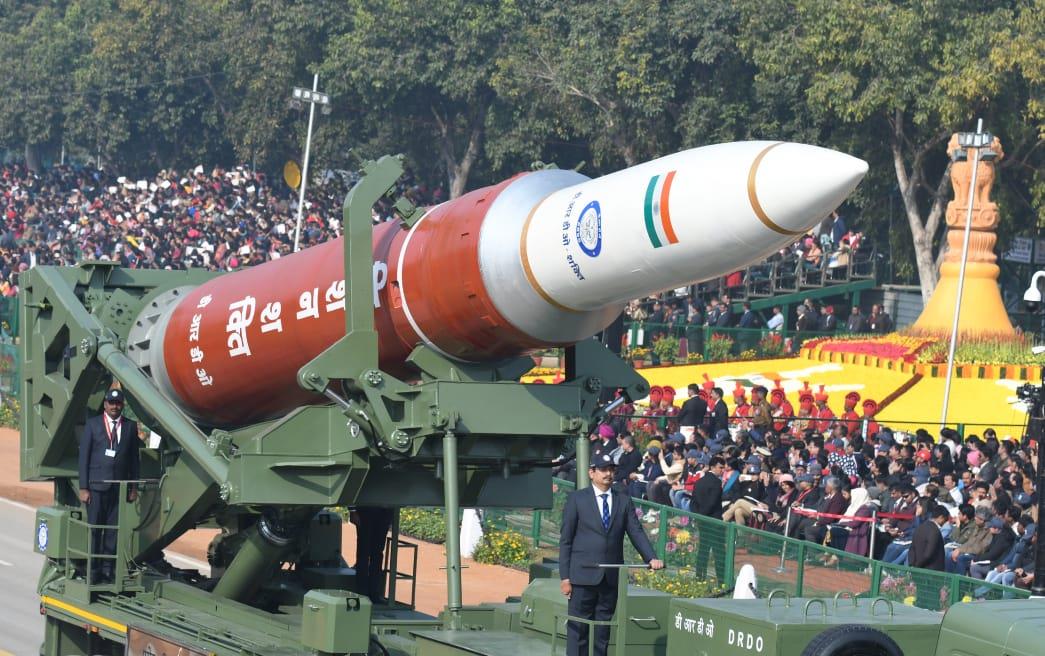Idrw Team
SOURCE: IDRW.ORG TEAM

The Indian Army recently unveiled a novel Hybrid Anti-Drone System at the Inno Yodha 2023 event in New Delhi, showcasing its commitment to staying at the forefront of counter-drone technology. This innovative system has been integrated into the upgraded ZSU-23-4 Shilka self-propelled anti-aircraft guns (SPAAGs), further enhancing their capabilities.
This hybrid system combines various technologies to effectively detect, track, and neutralize drones in the battlefield. It utilizes a combination of radar, electro-optical sensors, and radio frequency jammers to provide a comprehensive defense against aerial threats.
Continue readingSOURCE: IDRW.ORG TEAM

In a significant step towards enhancing its technological capabilities, the Indian Army has adopted an AI-based solution for Military Objects Detection System (MODS) in satellite images. This innovative technology, developed in-house, facilitates real-time detection and classification of military objects, empowering commanders at all levels to make informed decisions swiftly.
The MODS system marks a remarkable advancement in the Indian Army’s Intelligence, Surveillance and Reconnaissance (ISR) capabilities. By employing artificial intelligence, the system can automatically scan vast amounts of satellite imagery, identifying and categorizing military assets with precision. This real-time data stream provides tactical commanders with a comprehensive understanding of the battlefield, enabling them to formulate effective strategies and respond to threats promptly.
Continue readingSOURCE: IDRW.ORG TEAM

HAL, in collaboration with Bengaluru-based New Space Research & Technologies, has revealed the specifications for its ambitious project to transform the Kiran MK-II intermediate jet-powered trainer aircraft into the CATS OMCA (optically-manned combat aircraft). This project marks a significant development in India’s pursuit of cutting-edge unmanned aerial vehicle (UAV) technology.
Operating within the UHF Band (450MHz-500MHz), the UHF Data Link boasts a range exceeding 100 kilometers in the Telemetry-Only mode. This mode transmits critical data such as aircraft status, mission parameters, and audio communication. Additionally, the system operates at a range of 10 kilometers or more when transmitting both Telemetry and Video data, providing real-time situational awareness.
Continue readingSOURCE: IDRW.ORG TEAM

India has issued several Notices to Airmen (NOTAMs) announcing the closure of airspace for missile testing activities throughout December 2023. These NOTAMs indicate potential tests for various missile systems, raising questions about the specific types and intended purposes.
Continue readingSOURCE: IDRW.ORG TEAM

Hindustan Aeronautics Limited (HAL) has unveiled a significant upgrade for the Indian Navy’s MiG-29K/KUB fighter jets, showcasing a new glass cockpit at the recent Avionics Expo in New Delhi. This modernization program aims to enhance the aircraft’s capabilities in various aspects, including:
Enhanced Navigation Guidance: The new glass cockpit features a state-of-the-art Mission Computer with embedded Omni-mode Graphics (OMG) technology. This facilitates improved navigation guidance by integrating with indigenous systems like the LDP-41 Mission Planning System and Smart Multi-Function Display (SMFD).
Continue readingSOURCE: IDRW.ORG TEAM

The Indian Air Force (IAF) recently deployed its A321 fleet, currently awaiting transformation into the Netra MkII Airborne Early Warning and Control System (AEW&CS), for an unexpected task: ferrying Indian Army soldiers. These six Airbus A321s, formerly commercial aircraft operated by Air India, still bear remnants of their past lives with the familiar Air India livery, albeit with the addition of the Indian Air Force’s emblem on the mid-fuselage.
While the exterior may seem unchanged, significant changes are underway within. The IAF is meticulously upgrading the A321s with advanced military-grade avionics and preparing them for their future role as the Netra MkII AEW&CS. This internal transformation, slated for completion in 2025, will equip the aircraft with sophisticated surveillance and reconnaissance capabilities.
Continue readingSOURCE: IDRW.ORG TEAM

India’s Astra Mk1, a Beyond Visual Range Air-to-Air missile (BVRAAM), is gaining traction among nations that operate Russian Sukhoi Su-30 variants, signaling a growing interest in Indian-developed defense technologies. This surge in interest comes following significant orders from the Indian Air Force (IAF), one of the world’s largest operators of the Su-30 family of aircraft.
The Astra Mk1’s emergence as a viable alternative to Russian BVRAAMs stems from India’s strategic decision to move away from the Russian-made R-77 BVRAAMs. Recognizing the technological edge of Western BVRAAMs, India’s Defence Research and Development Organisation (DRDO) was tasked with developing the Astra BVRAAM, a missile capable of matching the performance of Western counterparts like the AIM-120 Advanced Medium-Range Air-to-Air Missile (AMRAAM).
Continue readingSOURCE: IDRW.ORG TEAM

The Vehicles Research and Development Establishment (VRDE), based in Ahmednagar, India, has undertaken a project named Mounted Gun System (MGS). This project aims to develop a state-of-the-art artillery system for the Indian Armed Forces.
The VRDE MGS has been compared to other contemporary MGS systems currently in operation around the world. This comparison highlights the strengths and potential of the Indian system.
Continue readingSOURCE: IDRW.ORG TEAM

The Indian Army’s Infantry Combat Vehicle (ICV) BMP-2 Sarath has undergone a significant upgrade, enhancing its combat capabilities. The most notable improvement is the increased capacity to carry two Forget Anti-Tank Guided Missiles (ATGMs) instead of the previously integrated single missile.
This upgrade represents a step towards modernizing the Army’s ATGM arsenal, transitioning from second-generation systems to more advanced third-generation fire-and-forget models. This shift focuses on enhanced accuracy, range, and lethality against enemy armor. Notably, the Army is also actively developing indigenous third-generation ATGMs, further bolstering its self-reliance in this critical area.
Continue readingSOURCE: IDRW.ORG TEAM

A high-level delegation led by Lt. General Osama Askar, Chief of the General Staff of the Egyptian Armed Forces, visited the BrahMos stall at EDEX2023, a major international defense exhibition held in Cairo, Egypt.
During the visit, Lt. General Askar showed keen interest in the BrahMos Weapon System, a supersonic cruise missile jointly developed by India and Russia. Dr. Sanjeev Kumar Joshi, Deputy CEO of BrahMos Aerospace, briefed the delegation on the system’s features and capabilities.
Continue readingSOURCE: IDRW.ORG TEAM

As the nation eagerly awaits the grand spectacle of the Republic Day Parade in 2024, the Defense Research & Development Laboratory (DRDL) in Hyderabad is preparing to leave a lasting impression with a stunning tableau showcasing a myriad of defense innovations. This tableau promises to be a remarkable visual representation of India’s cutting-edge defense capabilities, capturing the essence of the nation’s commitment to self-reliance and technological advancement in the defense sector.
At the heart of this tableau is a dynamic mount missiles display, featuring meticulously crafted models of various missile systems developed by DRDO. These missile models are strategically positioned on a rotatable stand, allowing them to rotate 360 degrees without touching each other. The tableau’s floor will be transformed to simulate a desert landscape, emphasizing the versatility of India’s defense technology.
Continue readingSOURCE: IDRW.ORG TEAM

@ajitkdubey
The Indian Air Force’s (IAF) Airbus-321 fleet has commenced frequent sorties to calibrate the equipment being installed on the aircraft as part of the Netra Mk2 program. The program involves converting six Air India A321 commercial planes into Airborne Early Warning and Control (AEW&C) aircraft.
The Airbus-321 fleet has already been stripped out of its commercial avionics and upgraded to military-grade. The aircraft will start receiving airborne sensors along with the main AESA radar from DRDO from next year.
Continue readingSOURCE: IDRW.ORG TEAM

Tesscorn, a leading provider of high-speed imaging systems and solutions, has been instrumental in supporting India’s Aerospace and Defense (A&D) missions by providing cutting-edge technologies that enable precise and reliable tracking of missiles, rockets, and other airborne objects.
The company’s TrackEye6DoF motion analysis software plays a crucial role in validating the separation of missiles and rockets from Indian Air Force (IAF) and Indian Navy (IN) fighter aircraft. The software utilizes advanced algorithms to track objects in three dimensions, providing accurate data on their trajectory, velocity, and acceleration.
Continue readingSOURCE: IDRW.ORG TEAM
Hindustan Aeronautics Limited (HAL) is gearing up to showcase its rich legacy in the design, development, and production of a diverse range of avionics systems at the Avionics Expo-2023. The Expo will be held at the Dr. Ambedkar International Centre in New Delhi from December 7-8, 2023.
The Expo will be inaugurated by the Chief of Defence Staff. It will witness cutting-edge avionics systems, engaging panel discussions, live demonstrations of avionics products and systems, and offer networking opportunities to the participants.
Continue readingSOURCE: IDRW.ORG TEAM

The mighty Tejas light combat aircraft has been spotted sporting a new and potent weapon: the MBDA-developed ASRAAM Close Combat Missile (CCM). This marks a significant development in the jet’s arsenal, adding a third Within-Visual-Range (WVR) missile to its already impressive repertoire.
Earlier this week, MBDA officials confirmed that the integration of ASRAAM onto Tejas is progressing smoothly, with test flights expected soon. This integration will transform Tejas into a true triple threat in the WVR arena, joining the ranks of the Russian R-73 and Israeli Python-5 missiles.
Continue reading